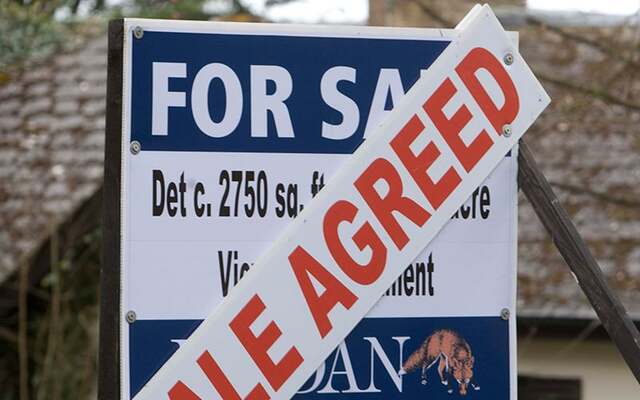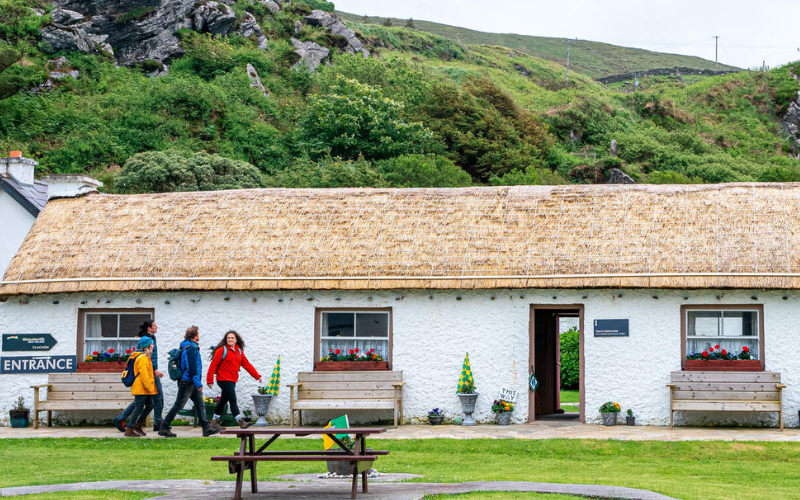A new study has revealed the counties with the more affordable housing, with County Leitrim coming out on top as the most affordable place to buy a home in Ireland.
In consideration of Ireland's ongoing housing crisis, Chill Insurance analyzed housing data from 2010 to 2024 across all Irish counties, looking at average house prices, incomes, and key financial metrics to determine the most affordable and least affordable locations to purchase a home.
Researchers calculated the minimum house deposit (10% of the purchase price), annual savings rates (12.7% of income), the time needed to save for a deposit, and projections for house prices through 2030. Using this data, they identified the most and least affordable counties, ranking them by 2024 average house prices. Additionally, future projections were ranked to highlight counties expected to experience the largest price increases.
Most Affordable Irish Counties to Buy a Home
1. County Leitrim
County Leitrim, Ireland’s least populated county, was named the most affordable place to buy a home. In 2024, the average home in Leitrim sold for €186,487, requiring a minimum deposit of €18,649 - a figure significantly below the national average of €29,108. This affordability makes Leitrim an attractive option for those with a smaller budget - including first-time buyers.
The average income here is slightly below the national average, sitting at €38,829 per year, but saving for a home here is still relatively achievable. Prospective buyers, saving at the national average rate of 12.7% of their income (approximately €5,000 annually), could accumulate the necessary deposit in 3 years and 9 months.
2. County Longford
In second place is County Longford. In addition to its affordability, Longford boasts a central location with excellent connectivity via major transport links, making it an ideal base for accessing nearby counties and the capital. This strategic positioning, combined with an average house price of €192,682, makes Longford an appealing choice for prospective homeowners.
Although Longford has one of the lower average annual incomes of €38,515, saving for a deposit here remains relatively achievable. Residents can typically accumulate the required amount in just under four years.
3. County Donegal
County Donegal is Ireland’s third most affordable county, with an average house price of €199,332. With an average annual income of €35,289, residents can expect to save approximately €4,482 per year. This means prospective buyers should be able to accumulate the €19,933 deposit required for a home in approximately 4 years and 5 months.
Least Affordable Irish Counties to Buy a Home
1. County Dublin
It comes as little surprise that County Dublin, home to the nation's capital, is Ireland’s least affordable location for prospective homeowners. With the average home price in 2024 standing at a staggering €614,012, Dublin’s property market is a reflection of its status as the cultural and economic heart of Ireland.
While average incomes in this county are significantly higher than the national average at €55,326, residents would need nearly nine years to save the substantial €61,401 deposit that is typically required.
2. County Wicklow
County Wicklow, also known as the "Garden of Ireland," ranks as the second least affordable place to buy a home. With average property prices at €461,534, Wicklow's breathtaking landscapes and proximity to Dublin come with a premium price tag. The average resident is expected to save a steady €6,340 per year, but it would still take 7 years and 3 months to save for a deposit here, which exceeds €45,000.
3. County Kildare
County Kildare ranks as Ireland’s third least affordable county. House prices here have averaged at €406,165 this year, meaning the average deposit stands at €40,616. For residents earning an average annual income of €50,143, it would take approximately 6 years and 5 months of disciplined saving to accumulate the required deposit.
What Housing Prices Will Look Like in 2030
Researchers also examined what housing prices might look like in five years, with County Wicklow projected to see the steepest rise in house prices, with a surge of 27% over the next half-decade.
However, County Laois has seen the largest increase over the last decade, jumping from an average of €101,752 to €265,224, a difference of 161%.
Dublin and Kildare also rank in the top five for the largest price increases too, increasing by 26% and 18% respectively. In 2030, the average home in Dublin is expected to cost €771,306, whilst property prices in Kildare are expected to settle at €479,373.
Meanwhile, more affordable counties such as County Longford, County Roscommon, and County Donegal are predicted to have much more marginal increases. Prices in Longford are projected to increase at a rate of 9.75%, meaning house prices will sit at €211,469 compared to the current €192,682. Prices in Donegal are set to increase by just 3.13% to €205,575.90.
Despite price increases of 181% in the last 10 years, Roscommon house prices are expected to rise by as little as 0.72% , while Sligo is the only county expected to see house prices drop by 2030.
Expert Advice
Ian O’Reilly from Chill Insurance shares tips for buying a home: “Saving for a deposit can feel daunting, especially when facing the prospect of spending up to eight years accumulating funds. While skipping your morning latte or avocado toast won’t singlehandedly get you onto the property ladder, smarter saving habits can make a big difference. Experts recommend following the 50/30/20 rule: allocate 50% of your income to necessities, 30% to personal wants, and 20% to savings. This approach is 7% higher than the national average savings rate, giving you a crucial reduction in the time it will take to accumulate your deposit.
“Consulting a mortgage advisor is another valuable step. They can help you understand what you can afford and potentially secure better mortgage deals, saving you money in the long run.
“Additionally, government help-to-buy schemes, especially for first-time buyers, can significantly reduce the financial burden and bring homeownership within reach.
“Finally, when you’re ready to finalise your purchase and transfer your deposit, don’t forget to purchase home insurance. Many banks require proof of home insurance before they will release mortgage funds, so having this in place is essential to ensure a smooth buying process.”




Comments